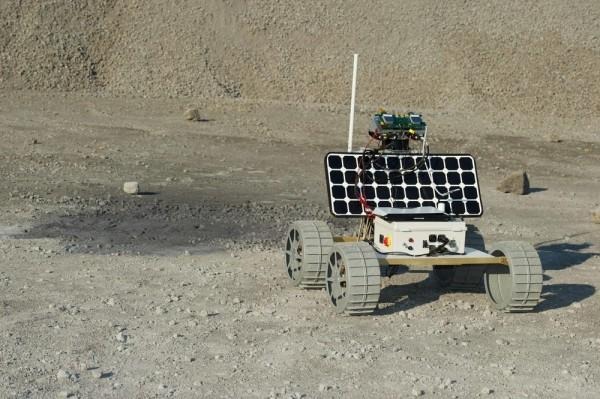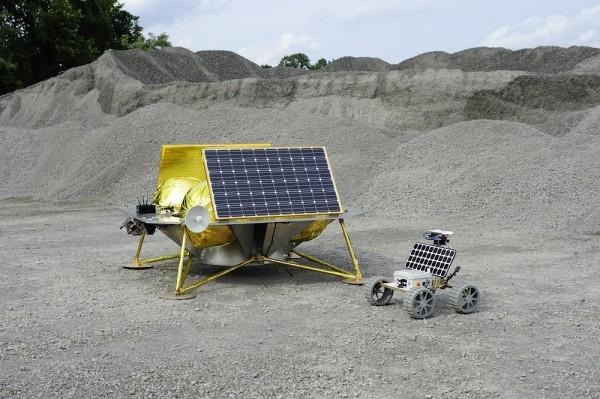This Little Rover Thinks It's Time We Went Back To The Moon
The attentions of the space-faring industry may have turned to more distant targets, like Mars or even hurtling comets, but that's not to say there's not still room to explore a closer neighbor, like our own moon. Carnegie Mellon has revealed the robotic rover it believes will not only clinch it part of a $20m+ Google Lunar XPrize, but discover new and unseen pits and caves that pock the moon's surface. Dubbed Andy, the robot is predominantly the handiwork of students, and took just nine months to develop.
While it may have been cooked up quickly, that doesn't mean it hasn't been thought through. Although Andy is small – under 10 pounds in the lighter lunar gravity – and just three feet long, it has huge foot-diameter wheels and a very broad stance.
Meanwhile, the center of gravity is pushed down, while the belly is drawn up, for better ground clearance.

The result is a huge amount of range for the wheels to move, allowing them to pivot to maintain traction even on steep or uneven surfaces; Carnegie Mellon suggests up to 30-degree inclines will be navigable. Taller rocks shouldn't present an issue, either, with Andy capable of straddling objects up to 15cm.
It won't be the fastest golf buggy on the block – 18cm/s is the top speed, in fact – but it'll be flexible, able to turn on the spot thanks to independently-controlled wheels. 100W of solar panels on the top will keep the 70W systems running.
A pair of cameras will give a wide-angle, 1936 x 1456 view of the moon's surface, and the university has even cooked up its own software and driving controls. That includes better ways to combine imagery captured during the landing process with 3D path reconstruction data.
The target is the untracked pits, caves, and polar ice that can be found all over the moon, and which have so far been pretty much neglected beyond orbiting photography. "Some pits might be entrances to caves," professor of robotics and director of the Field Robotics Center William Whittaker says of the scheme. "You can't explore caves from a satellite; you've got to be there, on the ground, so robots are the next big step."

It's all part of a project led by Pittsburgh's Astrobotic Technology to go back to the moon, with Andy the most obvious payload.
SOURCE CMU
MORE Andy
